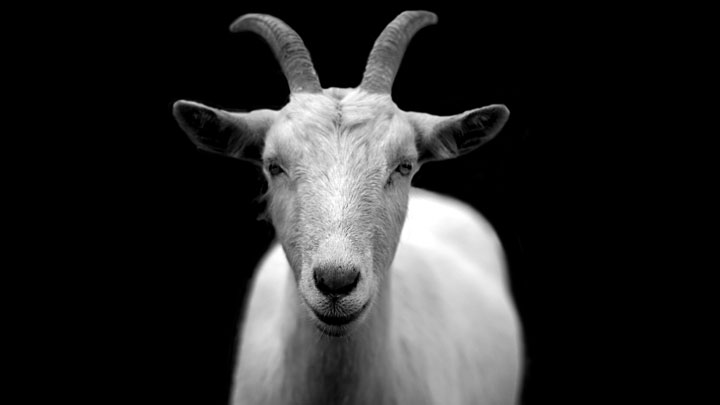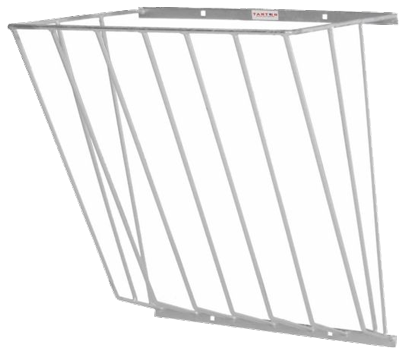
Just as you build a house before you move onto land, before you consider getting goats, you need a solid plan for how to house them. Lucky for you, goats are a lot less picky than your last roommate. In fact, they’re about as low-maintenance a tenant as you can get. Read on for a few tips, tricks and baseline parameters for giving your goats a happy and healthy environment.
Shelter
All goats really need to survive is to stay dry, and away from the cutting chill of a cold breeze. Thus for milder climes, a three-sided structure will suffice. That said, if you want your favorite companions to enjoy a little more comfort, or if you live in an area that often sees cold and freezing temperatures, a shelter with a door is often nice. Additionally, having at least one separated stall can be useful for birthing, or if an animal takes sick and needs to be isolated.
 For bedding, straw or waste hay works best. Some folks like wood shavings (other than cedar), but I find it to be a pain. It soaks easily and gets heavy quickly. Waste hay is my preferred bedding, since goats essentially create it themselves. As I’m sure you already surmised, goats require a large amount of hay to eat. Issue is, they’re sloppy eaters, and spill about a quarter of it on the ground. Pitch this wasted hay into the bedding area, and voila: You have a sustainable supply of bedding. You will, of course, have to put down fresh hay to start, but this is a great way of keeping it supplied. Speaking of hay, I like installing wall-mounted hay feeders in the shelter, like this one. This keeps the feed hay dry and off the ground, reducing your goats’ chances of swallowing a bellyful of worms.
For bedding, straw or waste hay works best. Some folks like wood shavings (other than cedar), but I find it to be a pain. It soaks easily and gets heavy quickly. Waste hay is my preferred bedding, since goats essentially create it themselves. As I’m sure you already surmised, goats require a large amount of hay to eat. Issue is, they’re sloppy eaters, and spill about a quarter of it on the ground. Pitch this wasted hay into the bedding area, and voila: You have a sustainable supply of bedding. You will, of course, have to put down fresh hay to start, but this is a great way of keeping it supplied. Speaking of hay, I like installing wall-mounted hay feeders in the shelter, like this one. This keeps the feed hay dry and off the ground, reducing your goats’ chances of swallowing a bellyful of worms.
Pasturing
When constructing your pasture area, remember these animals quite literally headbutt each other for fun. Hardheaded is, therefore, an understatement. Fencing needs to be strong, with no holes the goats can squeeze through, or low sections they can kneel under. I am a little concerned that when I said “strong,” however, that maybe you thought I just meant sturdy. Let me rephrase. My goats have eventually knocked down every single metal pen I have ever constructed for them. Every one. I use metal-grid pig fencing, wired to posts driven into the ground, one at the end of each panel, and another in the middle. It’s decently strong; issue is, goats love to stand on it, and after a while the wire rusts and gives out, collapsing the panel. Fortunately, it takes a while for this to happen (think once a year), so as long as you’re more attentive to upkeep than I am, you won’t have any issues. A good modification is to bury the bottom edge 12-inches down. This will go a long way to keeping it upright, and preventing anything from sneaking underneath–in or out. Alternatively, I’ve heard of people making pens out of poles with upright pallets threaded over them. It apparently works quite well, though I can’t claim any experience here.
As to location, try to put your pasture in some deep brush. As mentioned in a previous article, goats are natural bushhogs, and will eat all the scrubs, bark and overgrowth you can feed them. That’s not to say you won’t have to supply them with additional hay to eat, and grain if they’re milk producers of course, but we’ll cover the specifics of nutrition in another article. Another great thing in a pasture is large boulders. While this certainly isn’t a necessity, as not everyone has boulders just lying around, it will give the goats something to wear their hooves out on, meaning you’ll have to trim them less often.
Caring for goats may sound easy, but it’s important to have a plan before you begin. Structure your paddock around the tips above, and you’ll be well on your way.
A humble homesteader based in an undisclosed location, Lars Drecker splits his time between tending his little slice of self-sustaining heaven, and bothering his neighbors to do his work for him. This is mainly the fault of a debilitating predilection for fishing, hunting, camping and all other things outdoors. When not engaged in any of the above activities, you can normally find him broken down on the side of the road, in some piece of junk he just “fixed-up.”
